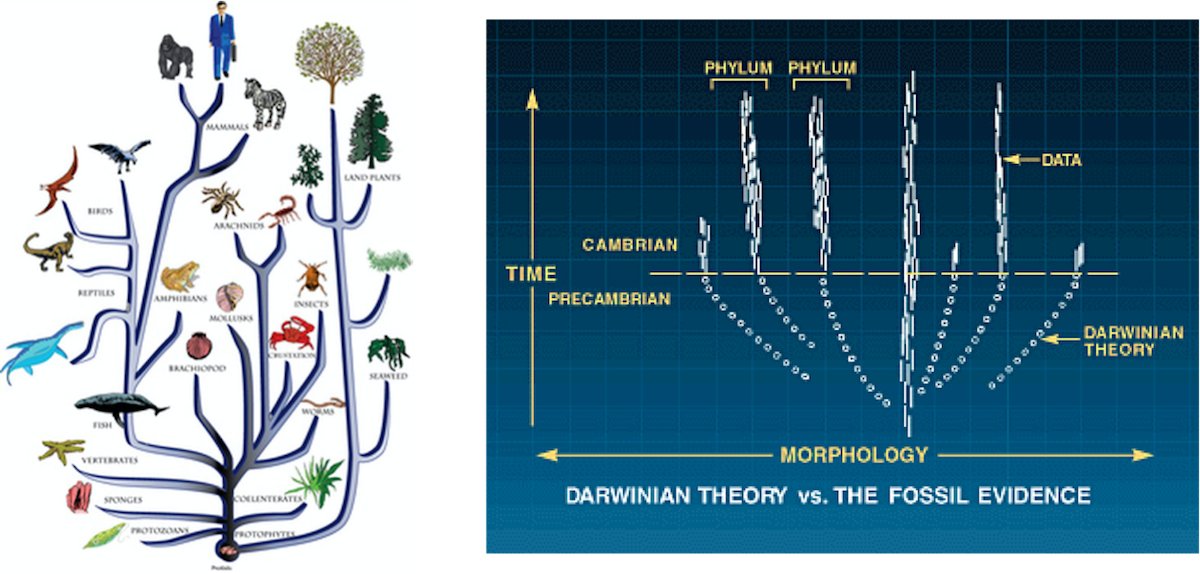 Education
Education
 Intelligent Design
Intelligent Design
Here Is How to Teach Intelligent Design to Young People

I recently had the opportunity to speak to an audience about how best to teach the evidence for design in nature to young people. Here, I will summarize my talk by describing the approaches I have found most effective for communicating the evidence to nontechnical audiences.
Self-Discovery
The first principle is helping participants discover the evidence for design themselves. This approach is particularly important for people who have been socially conditioned to suppress any evidence for design in nature they encounter. The process of self-discovery can bypass implanted biases and mental barriers, so the truth can fully engage the mind.
One of my favorite exercises is to show a series of objects or patterns and ask listeners to assign a score from 1 to 10 on their confidence that an image was designed versus simply the product of natural processes and chance. A score of 1 corresponds to complete confidence in lack of design, and a score of 10 corresponds to complete confidence in design. I often have audiences stand as I count up from 1 to 10. When participants hear the number corresponding to their score, they sit down. I deliberately use some images that are highly ambiguous, and I conclude with an object or pattern that was clearly designed such as Mount Rushmore or a crashed spaceship.

I then ask the audience to list the reasons they knew the last object was designed as compared to the more ambiguous images. Common responses include the following:
- Improbability of the object forming by chance.
- Differences between the object and the surrounding environment.
- Inability of natural process to generate the pattern.
- Similarities between the object and other known objects or patterns, such as between the faces on Mount Rushmore and pictures of famous Presidents.
- Evidence of purposeful intent.
Inevitably, audiences arrive at some version of William Dembski’s Explanatory Filter. By deriving the foundational principles of design detection themselves, participants gain a far deeper understanding of those principles and how they apply in different settings.
Animations
The final stage in the design detection exercise is to show an animation of some molecular machine such as ATP synthase. I then ask participants to assess whether the object is the product of natural processes and chance or the product of intelligent design based on the criteria they just identified. After participants choose design, I ask what led to their conclusion. The answers are always the same as for the obviously designed object in the first part of the exercise. In the end, participants never forget why the conclusion of design in life is self-evident.
In general, animations are one of the most effective tools to demonstrate the evidence for design in biological systems. Imagery speaks simultaneously to the mind and to the emotions. Animations also convey vast amounts of information in a short span of time. And, they become fixed in the memory far easier than mere prose. Today, several animations are readily available that demonstrate the wondrous engineering in life. Here are but a few examples:
Analogies with Images
Another effective technique is to use simple analogies illustrated by memorable images. One of my favorite examples relates to the information in DNA or in the amino acid sequences comprising proteins. To demonstrate how information points to design, I ask listeners to imagine having the flu and being called to the kitchen by ones mother for lunch. I continue by describing a bowl of alphabet soup sitting on a table. At the same time, I show a picture of the soup with the letters forming the message “DRINK PLENTY OF FLUIDS AND REST UNTIL YOU ARE FEELING BETTER.” I then explain how a short word might form by chance, but such a long message could never be explained by chance or any natural process such as the chemistry of the pasta or the physics of the heated broth. Large quantities of information can only be generated by a mind. And that conclusion is not simply falling into the concerned-parent-of-the-gaps fallacy. This illustration conveys how information reliably points to design far more easily than deconstructing all of the junk science floating around the Internet claiming that natural processes can generate large quantities of information for free (see here, here, and here).

Another helpful illustration is showing the predicted evolutionary tree of life next to the actual data from the fossil record corresponding to the Cambrian explosion. The disparity between theory and reality is so stark that most immediately recognize the tension. For instance, I met a student at Charles Darwin University in Darwin, Australia. He told me that he had decided to abandon belief in God because evolution proved that we were simply the product of blind natural processes. I have to admit that for some reason I anticipated his comment. I showed him the two images below. After viewing the images for less than a minute, he said that he recognized that evolution could not be true, and he immediately renounced his atheism.

If he were not so quickly convinced, I would have then told him that the time allotted by the fossil record for the complete transformation of one complex animal into another in most cases was only sufficient for two or three specific, neutral mutations to appear and spread throughout the population. The difference between the amount of information that could have been generated in the available time and the amount required for a large-scale transformation is comparable to the difference between the maximum height a pole vaulter has ever cleared and the distance to the moon. And the likelihood of some new discovery compensating for the information gap is comparable to the likelihood of an athletic trainer devising some new training regimen and nutritional program that would make up the gap between a vaulter’s highest jump and the moon. I might also show corresponding images to reinforce my point.
Implications
I often conclude my presentations by explaining the practical implications of recognizing that we are not the product of blind, undirected forces, but we are the creation of a designer. As an illustration, I ask listeners to imagine finding a rock on the beach. That rock most likely did not come with a manual that instructs readers to place the rock in a slingshot, pull back the rubber band, and then release. Since the rock was not designed, it has no particular purpose. In contrast, if one finds a watch, one immediately recognizes that the watch was designed, so it should be used according to the intentions of its maker. If one instead uses it to hammer a nail or to stir a cup of coffee, its potential and value would be diminished.
In the same way, people who believe they are simply an accident of nature have no reason to believe that they have any intrinsic value or worth, that objective morality exists, or that they can live for any meaningful purpose. In contrast, those who recognize that we were designed understand that we have inherent value, we should live by a moral standard corresponding to our design parameters, and our lives have inherent meaning and purpose. I might also show images of a rock and a watch to reinforce this crucial lesson.
